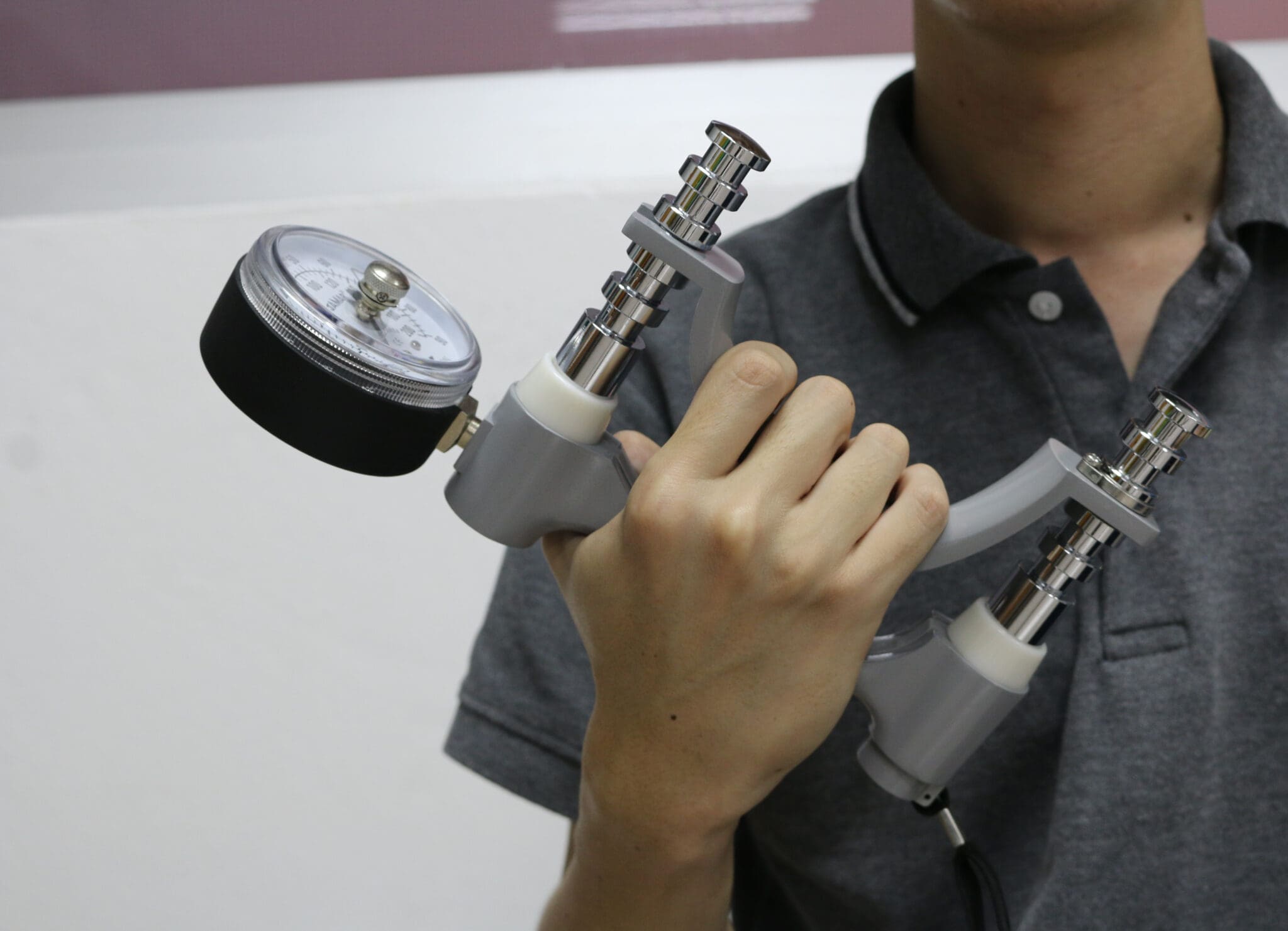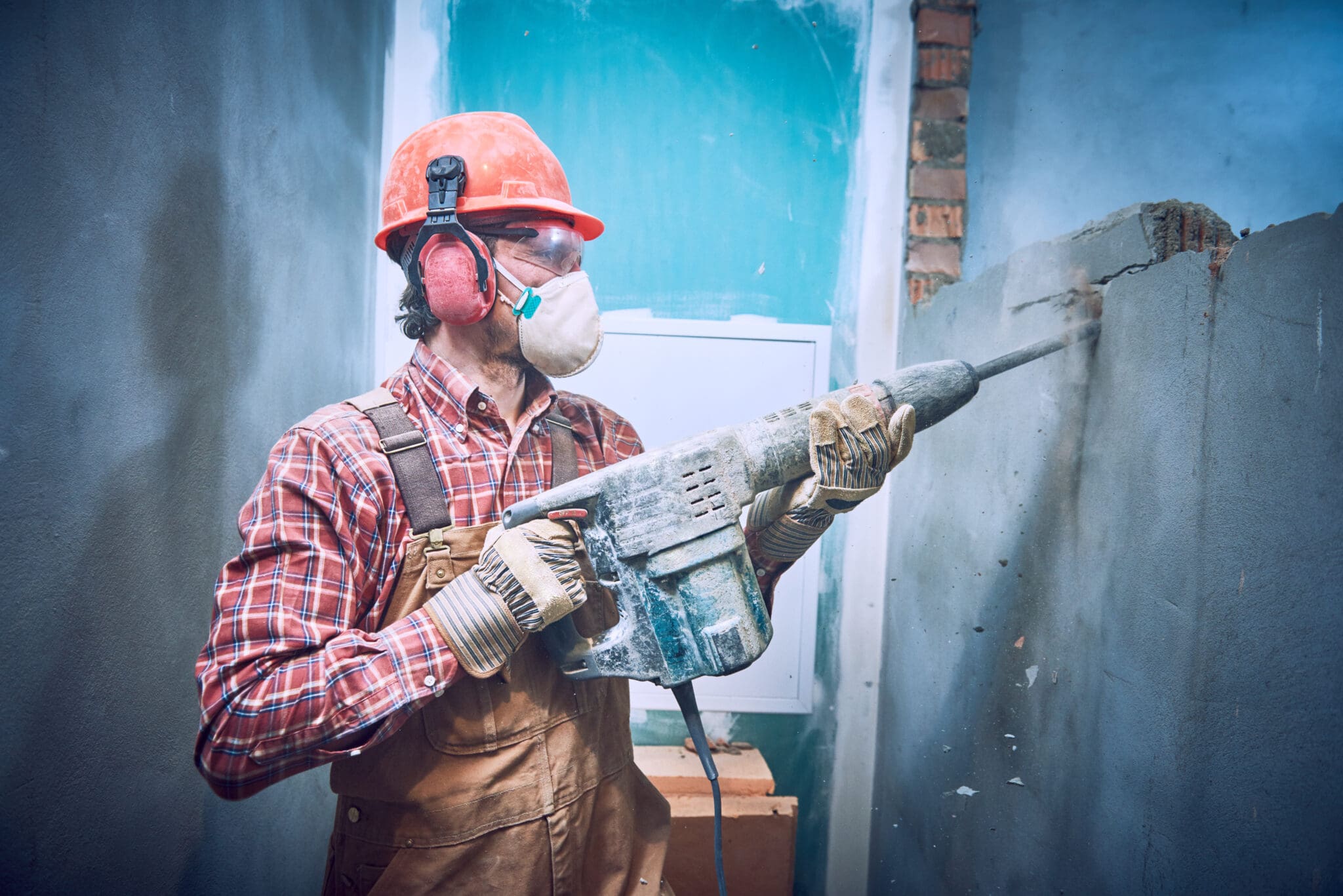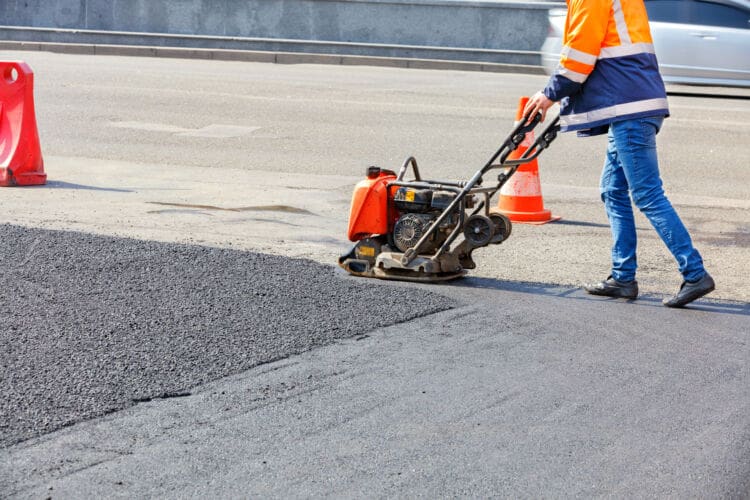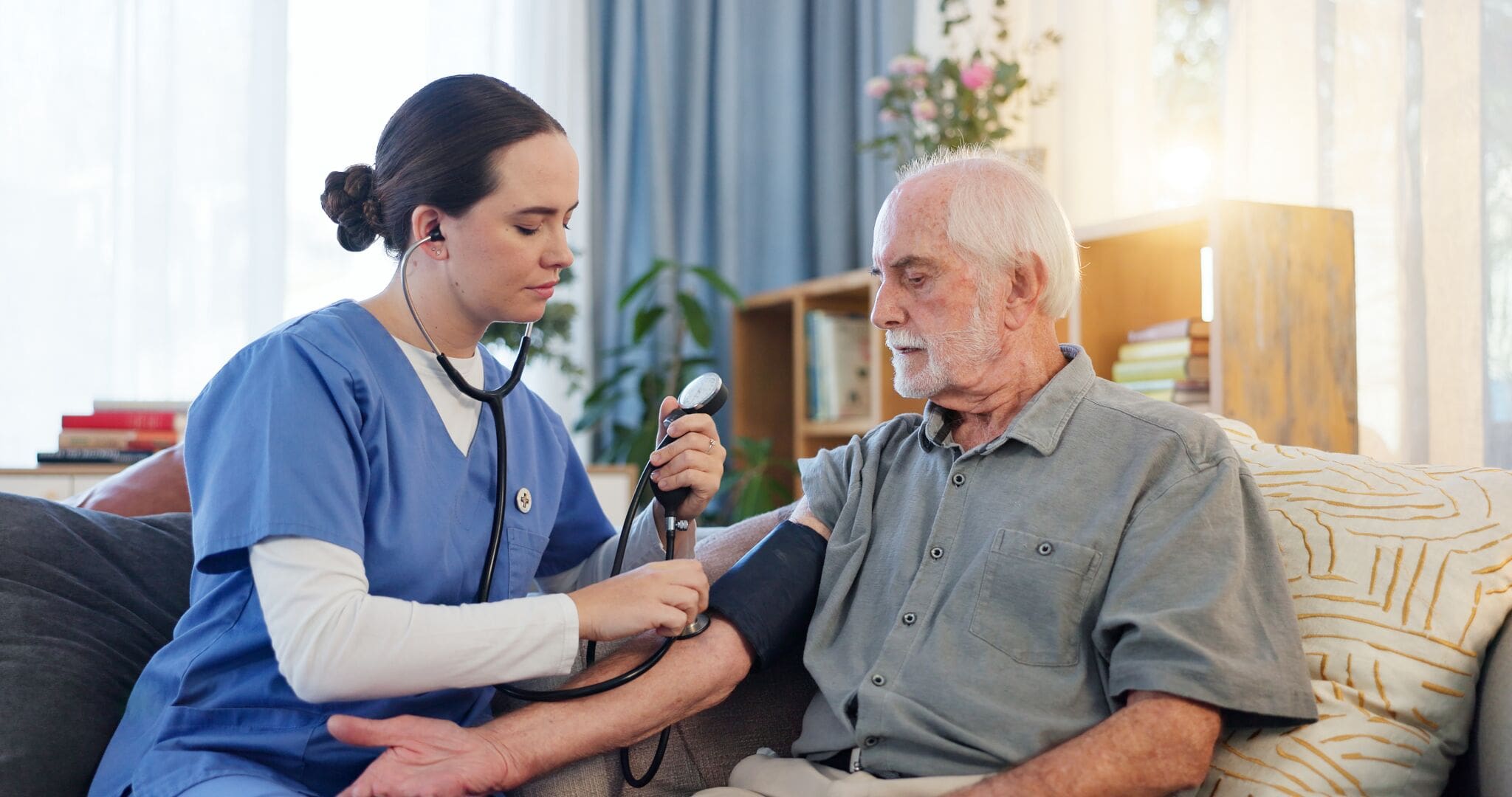In this article
Hand-Arm Vibration Syndrome (HAVS) is a serious and entirely preventable occupational health condition that affects thousands of workers each year across the UK. It’s caused by prolonged exposure to vibration, typically through the regular use of hand-held power tools or machinery. Over time, this exposure can lead to permanent damage to nerves, blood vessels and joints in the hands and arms, significantly impacting a person’s ability to work and carry out daily tasks, making HAVS safety a top priority for employers.
Indeed, the Health & Safety Executive (HSE) figures from 2023 show a 375% rise in new cases of HAVS. These figures show that over two million people are at risk of HAVS, and around 300,000 already suffer from it in the UK alone. For employers, the risks associated with HAVS are not just medical. They carry legal, financial and reputational consequences too.
UK regulations require employers to assess and control vibration exposure risks in the workplace and to provide affected workers with health surveillance and proper training. Failing to do so not only puts workers at risk of lifelong injury, but can also result in fines, enforcement action and lost productivity. In the last decade, around £2.5 million in fines have been brought upon businesses as a result of successful litigation claims for HAVS.
This article explores everything employers need to know about HAVS, including what it is, how the law applies, which industries are most at risk, and what effective measures can be taken to protect employees. Whether you’re an employer, manager or health and safety advisor, understanding your responsibilities around HAVS is essential for maintaining a safe and compliant workplace.
What is Hand-Arm Vibration Syndrome (HAVS)?
Hand-Arm Vibration Syndrome (HAVS) is a medical condition caused by prolonged and repeated exposure to hand-transmitted vibration, usually from the use of power tools or vibrating machinery. It is a type of occupational health condition that progresses gradually and, once developed, is often irreversible.
Understanding HAVS
HAVS affects the blood vessels, nerves, muscles and joints of the hand, wrist and arm. The condition includes a range of symptoms that may start as mild but can become severe if exposure to vibration continues to go unchecked. Common early signs include:
- Tingling and numbness in the fingers.
- Reduced grip strength.
- Loss of sensitivity, particularly in cold and damp conditions.
In more advanced stages, individuals may experience painful attacks of “vibration white finger,” where fingers turn white, feel cold and have reduced circulation.
The Difference Between HAVS and Vibration White Finger
Vibration White Finger (VWF) is the vascular component of HAVS and is often used synonymously with the condition. However, HAVS encompasses a wider range of symptoms, including neurological (nerve damage) and musculoskeletal problems. Employers must understand this distinction because different symptoms may emerge at different times, and early intervention can help limit long-term damage.
How HAVS Develops
The condition develops gradually over time, and its severity is often linked to both the intensity and duration of exposure. Workers who use vibrating tools for hours each day over months or years are most at risk. However, even short but frequent exposure can cause harm if not properly controlled. The condition is preventable with appropriate measures, but once symptoms appear, they may persist even after exposure is stopped.
Why Early Detection Matters
Identifying and addressing symptoms early is critical. If caught in the early stages, progression can be halted by limiting or removing exposure. Unfortunately, because symptoms often develop slowly and may be ignored or underestimated by workers, many cases are not reported until damage is permanent. That’s why regular monitoring and health surveillance are essential components of an employer’s HAVS management strategy.

What Do the Regulations Require Employers to Do?
In the UK, employers have a legal duty to protect workers from the risks associated with hand-arm vibration. These responsibilities are set out in the Control of Vibration at Work Regulations 2005, enforced by the Health and Safety Executive (HSE). The regulations aim to ensure that employers assess, control and monitor vibration exposure to safeguard the long-term health of employees.
Key Legal Duties Under the Regulations
Conduct a Risk Assessment
Employers must carry out suitable and sufficient assessment of the risks posed by hand-arm vibration. This involves identifying which workers are exposed, what tools or processes contribute to that exposure, and how frequently and intensely the vibration occurs. The goal is to understand who is at risk and to what extent.
Take Action to Eliminate or Reduce Exposure
Wherever reasonably practicable, vibration risk should be eliminated at the source. If complete elimination is not possible, employers must reduce exposure to as low a level as is reasonably achievable using appropriate controls.
Comply with Exposure Limits
The regulations define two key thresholds:
- Exposure Action Value (EAV): 2.5 m/s2 A(8) – daily exposure at or above this level requires action to reduce vibration exposure.
- Exposure Limit Value (ELV): 5.0 m/s2 A(8) – this is the legal maximum daily exposure and must not be exceeded.
These values are based on an average over an eight-hour working day and are used to guide how employers manage exposure.
Provide Health Surveillance
If employees are likely to be exposed above the EAV, employers must provide health surveillance. This typically includes regular health checks and questionnaires, with referrals to occupational health specialists if symptoms are detected. The aim is early detection and intervention to prevent permanent injury.
Inform, Instruct and Train Employees
Employees must receive clear information and instructions on the risks associated with vibration exposure, how to recognise early symptoms of HAVS, and the correct use of tools and control measures. Training should also include safe working practices, such as appropriate grip and posture.
Maintain Records and Review Controls
Employers must keep records of risk assessments, health surveillance outcomes (while respecting confidentiality), and any actions taken to control exposure. Risk assessments should be reviewed regularly, especially when introducing new tools or working methods.
Penalties for Non-Compliance
Failure to meet these legal requirements can result in enforcement action by the HSE, including improvement notices, prohibition notices or prosecution. Financial penalties can be significant, and employers may also face civil claims if workers develop HAVS due to inadequate controls or oversight.
The Health Effects of Hand-Arm Vibration at Work
Hand-Arm Vibration Syndrome (HAVS) is not just a workplace nuisance. It’s a life-altering condition that can severely impact a person’s ability to perform their job and participate in everyday activities. The effects of HAVS are cumulative, often developing gradually and worsening if exposure continues. Understanding these effects is crucial for employers aiming to protect their workforce.
Neurological Effects
One of the earliest signs of HAVS is nerve damage. Workers may notice tingling, numbness or a pins and needles sensation in the fingers, particularly at night or after tool use. Over time, this can progress to a permanent loss of feeling and a reduced ability to carry out tasks requiring fine motor skills, such as buttoning a shirt or picking up small objects.
Vascular Effects
HAVS also affects the blood vessels in the hands and fingers. Exposure to vibration can damage the vascular system, leading to poor circulation. This may manifest asvibration white finger (VWF), a condition where the fingers turn white or blue in cold or damp conditions, becoming painful and slow to recover warmth and colour. This vascular damage can become permanent if left untreated.
Musculoskeletal Effects
Continuous exposure to vibration can strain the muscles, tendons and joints of the hand and arm. This can lead to reduced grip strength, stiffness and pain. In more severe cases, workers may develop conditions such as carpal tunnel syndrome or repetitive strain injuries, which can further limit hand and wrist function.
Cumulative and Permanent Damage
The most concerning aspect of HAVS is that its effects are cumulative and often irreversible. If not identified and addressed early, workers can suffer lifelong disability. In later stages, some individuals may be forced to change roles or leave the workforce entirely due to the loss of functional ability.
Psychological and Social Impact
Beyond physical symptoms, HAVS can take its toll on mental health and quality of life. The inability to work, perform daily tasks or enjoy hobbies can lead to anxiety, depression and social isolation. This adds to the importance of prevention and early intervention.
Real-World Impact
According to the HSE, thousands of workers in the UK are diagnosed with HAVS each year. Despite being entirely preventable, it remains one of the most common forms of occupational ill health. The long-term effects not only harm workers but can also result in costly compensation claims, higher insurance premiums and reputational damage to employers who fail to act.

Which Jobs and Industries Are Most Likely to Involve Hand-Arm Vibration?
Hand-arm vibration is a risk in many sectors, particularly where employees regularly use hand-held or hand-guided power tools. While the danger is often associated with construction work, a wide range of industries and job roles expose workers to harmful levels of vibration.
Common Industries Where HAVS Risk Is High
- Construction and Demolition
One of the highest-risk sectors. Workers frequently use tools such as:
- Pneumatic drills and jackhammers
- Concrete breakers
- Vibrating pokers
- Angle grinders
Prolonged use of such tools is a leading cause of HAVS in the UK.
- Utilities and Civil Engineering.
Employees involved in roadworks, pipe-laying and groundworks are at significant risk due to their frequent use of:
- Compaction plates (wackers)
- Cut-off saws
- Impact wrenches
- Manufacturing and Engineering
Processes such as:
- Metal fabrication
- Assembly line work with vibrating tools
- Use of grinders, riveters or sanders
All involve repeated exposure to vibration, especially in roles involving prolonged tool use or repetitive tasks.
- Forestry and Agriculture
Chainsaws, brush cutters and other powered hand tools are commonly used in these sectors. Because tasks are often outdoors and in cold environments, symptoms of vibration white finger may be exacerbated.
- Rail, Shipbuilding and Heavy Industry
In heavy industries where large metal structures are built or maintained, vibrating tools like scaling hammers and needle guns are used extensively, increasing the risk of vibration-related injuries.
- Local Authorities and Facilities Management
Workers maintaining roads, parks and public spaces may use strimmers, blowers or compactors. These workers are often seasonal or part-time, which can lead to under-reporting of symptoms and inconsistent surveillance.
Job Roles at Particular Risk
- Roadworkers
- Grounds maintenance workers
- Fitters and mechanics
- Welders and fabricators
- Utility engineers
- Machine operators
- Maintenance workers and caretakers
Low-Frequency Users
Even in roles where vibration exposure isn’t daily, frequent short-term use can still pose a risk, especially if the cumulative daily exposure exceeds the action value. Employers must not assume that occasional use means zero risk.
Emerging Areas of Concern
With the increasing use of battery-powered tools and smaller handheld devices, some employers mistakenly believe these pose little risk. However, many of these tools still produce harmful levels of vibration, particularly if used for prolonged periods or with poor maintenance.
What Controls Can an Employer Put in Place to improve HAVS safety?
Preventing or minimising exposure to hand-arm vibration is not only a legal requirement but also a practical step towards protecting the long-term health of workers. The Control of Vibration at Work Regulations 2005 emphasise the importance of risk management, beginning with elimination where possible and continuing through a hierarchy of controls. Below are practical and effective steps employers can take to manage this risk.
- Eliminate the Hazard Where Possible
The most effective form of control is to remove the source of vibration entirely. Consider:
- Changing the process. Can the task be done in a different way that doesn’t require vibrating tools?
- Automate the task. Could a static machine or automated system carry out the work instead?
For example, using hydraulic bursting to demolish concrete instead of hand-held breakers could significantly reduce exposure.
- Substitute or Select Lower-Vibration Tools
If elimination isn’t feasible, choose equipment that produces less vibration:
- Use tools designed to reduce vibration, such as those with anti-vibration mounts or dampening systems.
- Consult manufacturer data to compare vibration emission levels.
- Replace old or poorly maintained equipment that may vibrate more than intended.
The right tool for the job is not just about efficiency. It’s also about safety.
- Control Exposure Time
Reducing the duration and frequency of exposure can lower the overall risk:
- Rotate tasks among workers to avoid one person bearing the full load.
- Plan work schedules to allow adequate breaks between tasks involving vibration.
- Avoid unnecessary tool use. Some tasks may not need to be completed using vibration tools at all.
You can use an online hand-arm vibration exposure calculator to determine how long workers can safely use a specific tool before reaching the action or limit values.
- Maintain Equipment Regularly
Well-maintained tools vibrate less. Employers should:
- Implement a maintenance schedule for all vibrating equipment.
- Check for wear and tear, especially on rotating components and tool mounts.
- Keep blades sharp and parts lubricated to reduce resistance and vibration.
Workers should be trained to report tools that are damaged, blunt or difficult to control.
- Improve Work Practices
Encourage safe and effective tool handling:
- Train workers to grip tools just firmly enough for control, not tighter.
- Promote good posture to reduce fatigue and tension in arms and shoulders.
- Discourage using tools in cold or wet conditions, which can worsen vascular symptoms.
Even simple changes in technique can make a big difference over time.
- Provide Personal Protective Equipment (PPE) – with caution
PPE such as anti-vibration gloves may offer some comfort, but they are not a substitute for effective risk control. HSE states that these gloves have limited effectiveness in reducing vibration transmission. However, they can help:
- Maintain hand warmth, reducing the likelihood of white finger episodes.
- Improve grip on tools if designed appropriately.
Choose gloves that are suitable for the specific tool and task, and ensure they fit well.
- Health Surveillance and Employee Feedback
Monitoring workers’ health and gathering feedback on tool performance helps identify problems early:
- Encourage reporting of symptoms such as tingling, numbness or pain.
- Respond promptly with reassessment of tasks or medical referral.
- Use surveillance data to inform purchasing decisions and refine controls.
- Keep Records and Review Controls
Ensure risk assessments, tool inventories, exposure estimates and maintenance logs are up to date. Controls should be reviewed:
- Annually or more often if needed.
- When introducing new tools or processes.
- If a worker develops symptoms.
Hand-Arm Vibration Syndrome Treatment
Once a worker begins to experience symptoms of HAVS, early recognition and intervention are vital. While HAVS is preventable, it is not curableonce the damage is done, meaning treatment focuses on managing symptoms, slowing progression and preventing further exposure. Employers must support affected workers by ensuring they access appropriate care and by making reasonable workplace adjustments.
- Early Detection and Health Surveillance
Early-stage HAVS may present with subtle symptoms such as:
- Tingling or numbness in the fingers.
- Reduced sense of touch or dexterity.
- Fingers turning white in cold temperatures.
Employers must establish a health surveillance programme for workers who are exposed to vibration at or above the action value (2.5 m/s2 A(8)). Surveillance should include:
- Pre-employment screening
- Regular questionnaires to check for early signs
- Referral to an occupational health specialist if concerns arise.
Detecting early symptoms can help limit further exposure and avoid permanent damage.
- Medical Management
While HAVS cannot be reversed, symptoms can often be managed to improve quality of life. Treatment may involve:
- Vascular care, such as medication to improve circulation and reduce the frequency of vibration white finger attacks.
- Neurological support, including exercises to maintain dexterity and grip strength.
- Pain management, with medications or therapy as appropriate.
- Referral to a specialist in occupational health, rheumatology or neurology.
Some workers may benefit from hand therapy or physiotherapy, depending on the extent of damage.
- Workplace Adjustments
Employers must consider reasonable adjustments for affected workers, which may include:
- Reassigning them to non-vibrating tasks.
- Reducing exposure time.
- Offering assistive tools or modified equipment.
- Allowing extra breaks or lighter duties.
In some cases, a full return to tool-based tasks may not be possible. Employers should work with health professionals and HR to explore redeployment or training for alternative roles.
- Compensation and Legal Support
Workers diagnosed with HAVS may be eligible for compensation under:
- Industrial Injuries Disablement Benefit (IIDB) if the condition is reportable.
- Personal injury claims if the employer has breached their legal duties.
Employers must report certain HAVS cases under RIDDOR (Reporting of Injuries, Diseases and Dangerous Occurrences Regulations) if they are work-related and diagnosed by a doctor.
- Long-Term Management and Support
Because HAVS can worsen over time (even without further exposure), ongoing support is essential. Workers may need:
- Periodic reviews of their condition.
- Continued workplace accommodations.
- Emotional or psychological support, especially if they can no longer perform their usual duties.
Employers who take HAVS seriously not only comply with the law, but they also build a safer, more loyal workforce and reduce the risk of costly claims and reputational harm.

Conclusion: Taking HAVS Seriously Is an Employer’s Duty
Hand-Arm Vibration Syndrome (HAVS) is a serious, disabling condition that has affected thousands of workers across the UK and continues to do so today. Yet it remains entirely preventable when the right controls, training and health surveillance systems are in place.
For employers, protecting workers from hand-arm vibration is not only a legal obligation under the Control of Vibration at Work Regulations 2005, but it’s also a core part of a responsible health and safety culture. From identifying risks and selecting the right tools to monitoring exposure and supporting affected staff, effective HAVS prevention is an ongoing process that requires commitment at every level of an organisation.
When employers act early, provide robust training and maintain open communication with their workforce, they not only safeguard health, but they also avoid lost productivity, compensation claims, and reputational damage.
By putting workers’ long-term wellbeing first, employers send a clear message: that no job is worth risking a lifetime of pain, numbness or disability.






